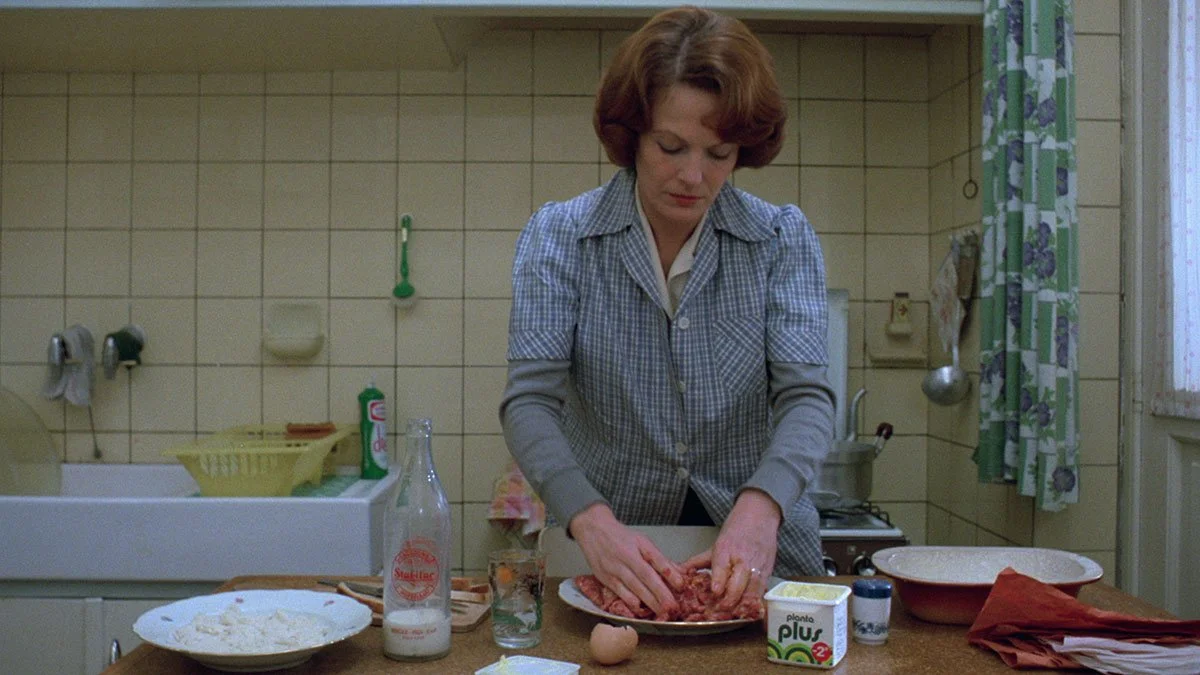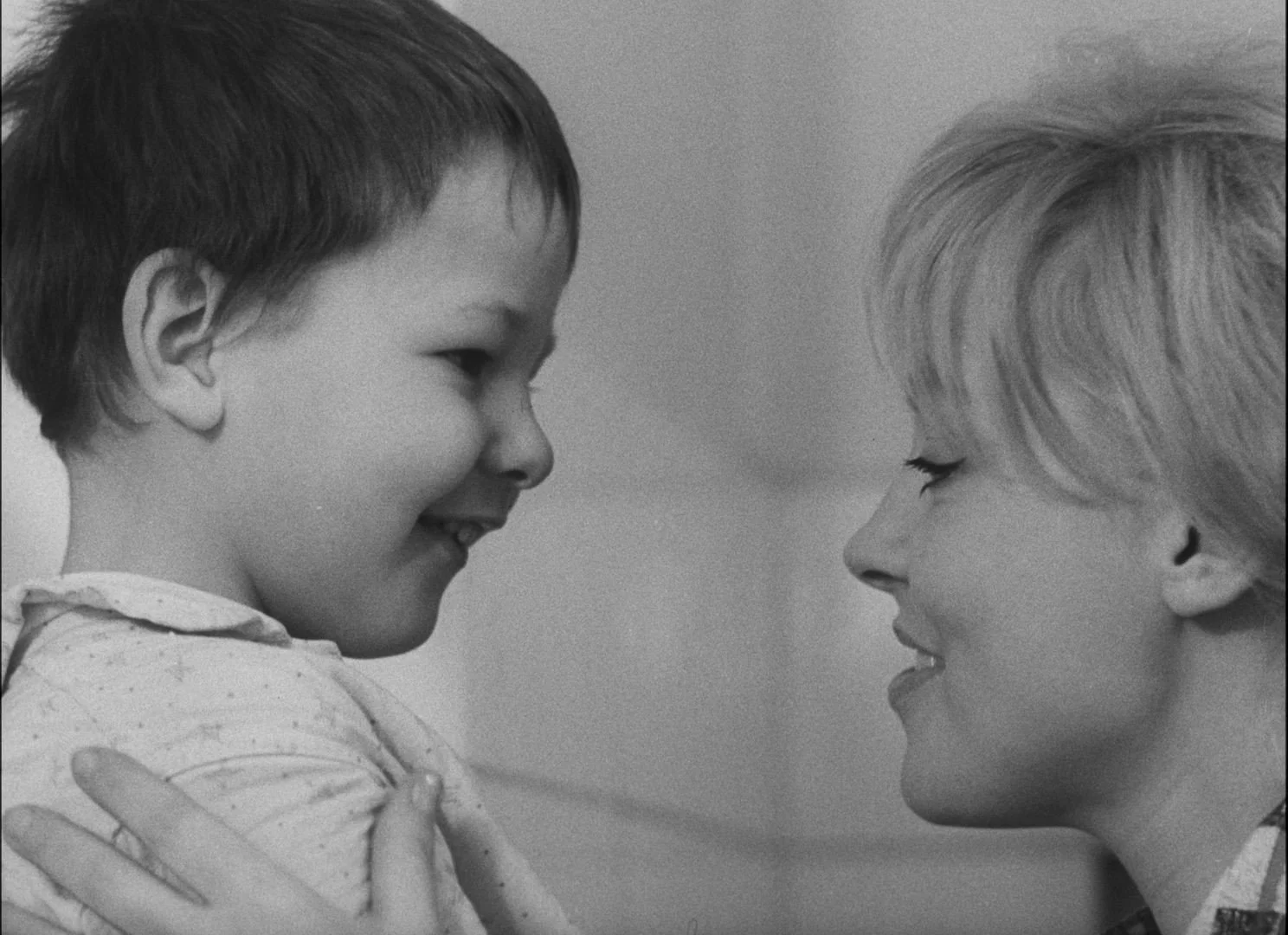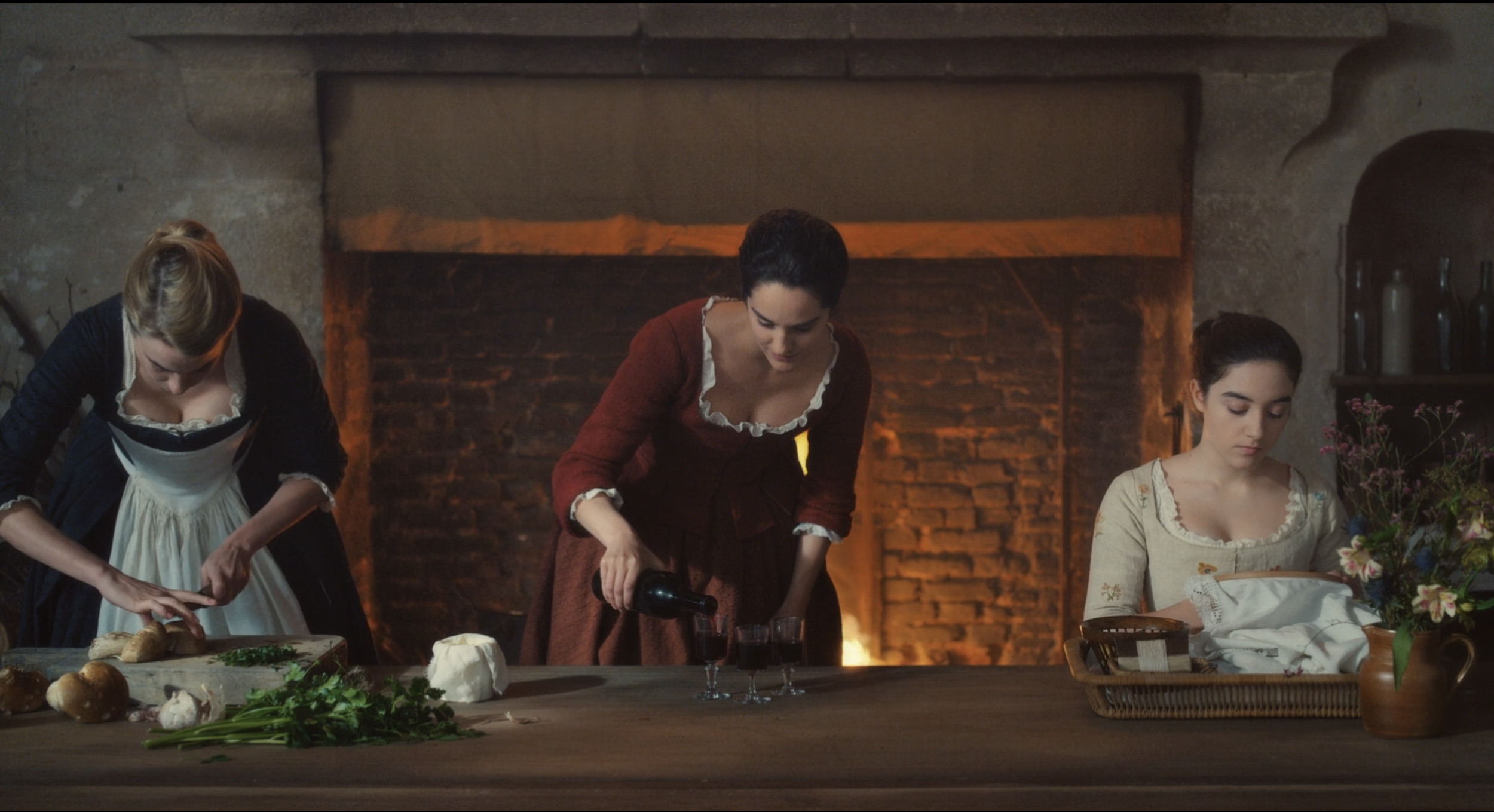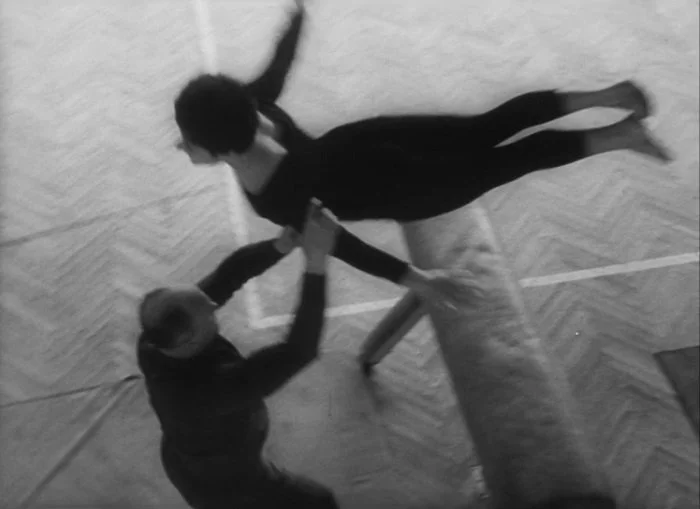Auteurism: A Context-Dependent Theory
Through his piece “Notes on the Auteur Theory in 1962,” Andrew Sarris introduces three criteria that comprise an auteur. Sarris deems these three factors – “technical competence,” “distinguishable personality” , and “interior meaning” — as the makeup for a singular, renowned director. It can be argued that the auteur theory, though certainly not without merit, has more to do with the political and social waters that the director inhabits rather than the director themselves. The space surrounding a director in film history is what molds the opinion that fills in Sarris’s criteria for an auteur. A director's proximity to both classical cinematic tradition and their country’s political majority plays a crucial role in determining their status as an auteur, highlighting the fundamental flaws and lack of political and social awareness of the theory.
The works of two directors—Céline Sciamma and Chantal Akerman—serve as valuable examples to challenge the auteur theory. Both directors' bodies of work share similarities stylistically and thematically. Chantal Akerman, director of films like Jeanne Dielman, 23 Commerce Quay, 1080 Brussels (1975), and Je, Tu, Il, Elle (1974), and Celine Sciamma, whose body of work contains Portrait of a Lady on Fire (2019), and Water Lilies (2007), present a compelling case for rethinking auteur status. Although both meet Sarris’s criteria, the disparity in critical recognition reflects the uneven and context-dependent way auteur status is granted.
Akerman and Sciamma have a substantial amount of overlap when it comes to Sarris’s criteria. In terms of technical competence, both directors prioritize the intentional construction of the mise en scene and incorporate long takes into their work, placing emphasis on extracting meaning from the banal moments of their character's daily lives. The directors use their technical skills in flux with what can be argued as what defines their interior meaning: using the meticulous outer construction of a scene to draw out truths of their character’s inner lives. Both Sciamma and Akerman come from similar geographic backgrounds – with most of their work originating from France – as well as similar social backgrounds, with both of them using their identity as lesbians and women as a major stimulus for their body of work. Both directors explore themes of identity and the queer female experience, and tie in aspects of their respective personalities and backgrounds to convey their messaging in a meaningful manner. In terms of distinguishable personality, Akerman and Sciamma share a good deal of overlap as well. Both favor subtlety and minimalism over melodrama, constructing a unique space for exploration through their quiet, deliberate narratives. Both directors share a keen interest in exploring the lives of women, and do so in an unobstructive, unobtrusive manner that is often identified with Laura Mulvey’s “Female Gaze” theory. In her piece “Visual Pleasure and Narrative Cinema,” Mulvey writes that “In a world ordered by sexual imbalance, pleasure in looking has been split between active/male and passive/female. The determining male gaze projects it fantasies onto the female figure which is styled accordingly,” (837). Both Sciamma and Akerman are committed to undermining the male gaze by portraying distinct and nuanced portrayals of women’s experiences, emotions, and relationships.
Jeanne prepares veal cutlets (Jeanne Dielman, 23 Commerce Quay, 1080 Brussels, 1973)
One way their similarities can be exemplified are in two parallel scenes from Jeanne Dielman, 23 Commerce Quay, 1080 Brussels and Portrait Of a Lady on Fire, respectively. In Jeanne Dielman, a nearly five minute sequence shows Jeanne (Delphine Seyrig) preparing veal cutlets for her husband and son – a moment that uses domestic ritual to evoke emotional repression and structural gender roles. Likewise, in Sciamma’s Portrait of a Lady on Fire, a similar long take captures Marianne (Noemie Merlant) and Heloise (Adele Haenel) preparing dinner while Sophie (Luana Bajrami), the maid, sits beside them working on a piece of embroidery. Both scenes serve the dual purpose of exploring the seemingly banal daily lives of women, while also making comments on class and power structures. These moments that are littered throughout both director’s filmography, subtly expose the unspoken tensions that define the characters’ lives, offering a critique of societal structures through the lens of intimate, quiet interactions. These cinematic techniques—extended takes, silent labor, and feminine intimacy—highlight how both directors center women’s experience and critique class and patriarchal power structures through the frame of daily life. Scholars like Ivone Margulies (Nothing Happens: Chantal Akerman’s Hyperrealist Everyday) and Laura Mulvey (Visual Pleasure and Narrative Cinema) have examined how such moments function as counter-gazes in feminist film, offering further theoretical grounding for their auteur status.
Sciamma’s status as an auteur cannot be divorced from the cultural environment in which she works. The rise of feminist cinema and LGBTQ+ representation in the 21st century has created a space for Sciamma’s work to be recognized within a realm in which her voice is not entirely singular. Her focus on the complexities of female relationships and gender identity is part of a broader social movement that seeks to challenge traditional representations of women in film. Sciamma’s wavering auteur status is not only the result of her personal style, but also the outcome of her alignment with these larger cultural forces. Her place within the cinematic tradition and her relationship to contemporary social movements significantly influence how her work is perceived and categorized as auteur filmmaking. If Sciamma were to have made Portrait of a Lady on Fire in the 70s when Akerman was working, her auteur status would likely have been cemented by today’s critics and scholars. Her place within this movement influences how her work is received and categorized—something that demonstrates how auteur status is shaped not just by the work itself, but by when and how that work enters the cultural conversation.
Akerman, on the other hand, cannot have her auteur status separated from the political movements of the time. Her exploration of domesticity and female experience was a response to the lack of meaningful representation of women in film, and her work gained recognition precisely because it was situated within a larger cultural shift. In this sense, Akerman’s auteur status is shaped not only by her technical and artistic contributions but also by her pushback against the largely misogynistic and homophobic culture of the 1970s. By distancing herself so far from the mainstream, she strengthens herself in terms of Sarris’s criteria, and has received more acclaim as an auteur because of this. Her marginality within the system, in both gender and content, paradoxically afforded her greater critical distinction, especially as feminist theory and academic interest in her work grew in the decades following her films' releases.
Akerman and Sciamma aren’t the only ones whose auteur status has been determined by the times. Vera Chytilova’s Something Different, her 1963 documentary-style narrative film that examines the daily lives of two women: a female gymnast dealing with her harsh male trainer, and a bored housewife with an indifferent husband and defiant son. Chytilova has a nearly identical visual and thematic style to Akerman in this film, but what makes it arguably more radical than Akerman’s work was the era it came from. The other work being produced during the Czechoslovak New Wave, shares virtually no similar characteristics to this film. The Czech New Wave was a cinematic movement born from a group of young filmmakers who were navigating their careers and passions while under communist rule, resulting in strict regulations of what could and could not be shown on screen. This led them to use tools like allegory, dark humor, and disorienting visuals in order to conceal their true political messaging and glide under the hand of censors. Chytilova’s Something Different, however, did the exact opposite of using metaphor or obfuscation to communicate politically charged content. Through Something Different, Chytilova portrayed women’s lives in a candid, starkly political manner, addressing feminist issues directly by presenting them plainly. Chytilova’s film stands in contrast to the typically disorienting or subversive styles of other films of the Czechoslovak New Wave, making it more overtly political. Due to the political context surrounding its creation, Chytilova falls easily into Sarris’s criteria for an auteur, as her work both challenged mainstream cinema and resonated with the political and cultural environment in which it was made. This said, Chytilova still doesn’t have the same acclaim as Akerman. This could be due to the fact that the Czech New Wave was one of the most politically charged eras in cinematic history, meaning that Chytilova’s radical nature came full circle to being of the norm. But what if Something Different were made today, in the same cultural moment as Sciamma’s work? Would Chytilova’s radicalism be perceived the same way, or would it be lost in a sea of similar films? Would Chytilova’s auteur status be better cemented in the ‘60s or in the present day?
Eva trains with her coach (Something Different, 1963)
Věra speaks to her son, Mydla (Somethign Different, 1063)
In the 1960s, work of her style was scarce as well as a direct feminist intervention in a rigid political climate, which made it extraordinary—but also difficult to canonize widely. Today, Chytilová’s films might gain broader global distribution and academic attention due to increased interest in political and feminist cinema. However, her radicalism could be muted against a contemporary backdrop of films that share her themes, reducing the sense of singularity that fuels auteur branding. Her status might be more recognized today, but it was arguably more radical in her own time. Chytilova’s auteur identity was forged in resistance, much like Akerman’s — and this resistance is key to how the auteur label has historically functioned.
Thematically, she aligns with Akerman and Sciamma in her exploration of gender roles and women’s inner lives. Her later work Daisies pushed even further into her stark feminist themes, using surrealist editing, vivid color schemes, and nonlinear narrative to critique consumerism, conformity, and patriarchy. Although this film falls more in line with the Czech New Wave’s visual style, it still resonated as entirely radical in its themes. The protagonists, Marie I and Marie II, engage in anarchic behavior that undercuts all expectations of typical feminine etiquette, making the film a radical entry into feminist cinema. Despite these achievements, Chytilová’s name is less commonly invoked in auteur discourse—likely due to the political constraints of the Czech New Wave and the relative isolation of Eastern European cinema from Western critical discourse at the time.
Celine Sciamma (middle) poses with her “Best Screenplay” awards alongside her actresses, Noemie Merlant (Left) and Adele Haenel (right)
Heloise & Marianne prepare dinner while Sophie Embroiders (Portrait of a Lady on Fire, 2019)
Something Different garnered praise at its release, winning the main prize at the 1963 Mannheim Film Festival, just as Portrait of a Lady on Fire won best screenplay at the Cannes film festival. Jeanne Dielman, though not strictly banned, faced heavy initial resistance, including a negative critical reception and viewers walking out mid-screening. This said, over 50 years later the film was named number one on the 2022 “Sight and Sound” poll, deemed the greatest film of all time. While awards and accolades don’t always reflect artistic merit, they do show how the reception and re-evaluation of these directors is shaped by shifting cultural values. The canonization of Akerman that occured long after her most groundbreaking work suggests that auteur status is as much about long-term critical positioning as it is about immediate impact.
While their work may not be identical, the three directors share a minimalist, female perspective, which is not only a reflection of their personal identities but also of the broader social movements they engage with. This raises important questions about the auteur theory itself: Does it account for the director’s place in time, or is it merely an outdated framework? Is the concept of the auteur at risk of becoming obsolete as cinema’s originality becomes more and more exhausted? In his essay "Towards a Theory of Film History," Sarris himself acknowledges that, "The reason foreign directors are almost invariably given more credit for creativity is that the local critic is never aware of all the influences operating in a foreign environment," (250). Here, Sarris underscores the necessity of considering political and historical context when assessing a director’s role and creativity. This idea points to a significant gap in the original auteur theory, which fails to address the broader political environment that shapes both the creation of a film and its reception — something that is particularly relevant in the case of Akerman and Sciamma’s works.
The auteur theory, as articulated by Andrew Sarris, provides a useful framework for understanding a director’s creative role in filmmaking. However, its application is limited by its failure to account for the broader historical, cultural, and political contexts in which directors create their work. Saris’s criteria does not contain enough nuance and does not account for the political landscape of the time and geography in which a director’s work is being produced. There is a push and pull in cinematic history tied closely to politics, and what makes up most of these “auteurs” is the pushing against the winds trying to keep them in line, resulting in cinema that lacks the standards of their era. The works of Chantal Akerman, Céline Sciamma, and Vera Chytilová prove that auteur status is not simply a reflection of artistic identity, but a product of timing, ideology, and the evolving language of cinema. These directors push against their respective norms, and in doing so, reveal that auteurism is not an apolitical measure of genius, but a construct that reflects the cinematic and cultural battles of its time.




